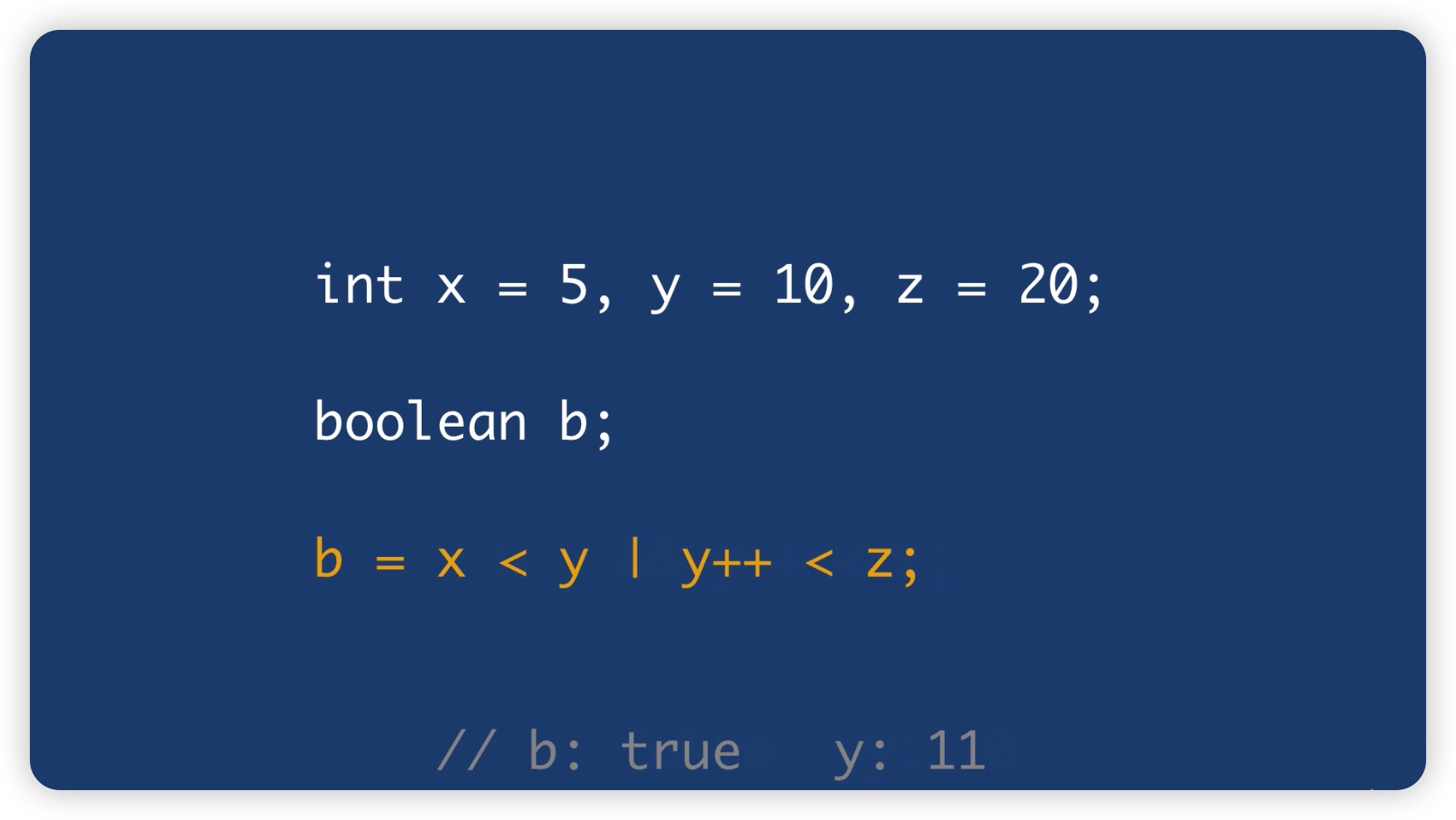OPERATORS IN JAVA
THE COMPOUND ASSIGNMENT OPERATORS
Let’s start right away with an example. From the figure below you can see that we took the value of the variable x (10) we added 5 and assigned the result to the variable x.

We see the contracted form alongside that has the same meaning.

x+=5 -> x = x + 5
Compound assignment forms exist for all arithmetic operators:
+=;-=;*=;/=;%=
The use of these forms is very common in Java, so it is good to understand them early on.
THE COMPARISON OPERATORS
We use such operators to perform a true comparison between two values.

These operators always result in a boolean value (true or false). The two equality operators == and inequality != can be used to compare values of any type, primitive values and objects. The other operators we can use only to compare primitive data types.

LOGICAL OPERATORS
They allow us to form even complex boolean expressions that return true or false.

Complex expressions can be formed; in fact, such operators can be combined with each other. They apply to operands of type boolean; to understand how these operators work, it is best to examine their truth tables. The AND operator returns true only when combining operands that are true.

The OR operator returns false only when combining operands that are both false, in all other cases it returns true.

The XOR operator returns true when the compared operands are different, false when they are the same.

The NOT operator negates (reverses) the operand on which it is applied.

LET’S GIVE AN EXAMPLE, MORE YOU WILL FIND IN THE DOWNLOADABLE CODE FROM GITHUB

THE SHORT-CIRCUIT LOGIC OPERATORS
These operators are two AND and OR and are variations on those already reviewed. They serve to make our code more efficient; we’ll see why in a bit. Let’s see how to write these two operators:
&& = AND Logical Conditional
|| = OR Logical Conditional
Let us see what are the special features of these two operators and why we talk about short-circuit.

At the end of the last instruction we will get b = false and y = 11. This is because the logical AND & also evaluates the second condition even if it is superfluous. In fact, since the first expression is false, the remaining part of the code might as well not be executed since the result is already acquired.

The reason it is called short-circuit is this: In fact if the first part of the expression fails then the whole expression is false. The AND && produces a short circuit in that the second part of the expression is not evaluated. This also results in the variable y not being incremented, in fact the post increment is not executed. Let us now see what happens with the conditional OR.

Analyzing the first part of the expression already shows that the whole expression will be true. The | operator examines both conditions, so y is also incremented.

Again to improve performance, the second part of the expression is not evaluated.
LINKS TO PREVIOUS POSTS
LINK TO CODE ON GITHUB
EXECUTION OF THE EXAMPLE CODE
- Download the code from GITHUB, launch the JAR file with the following command in Visual Studio Code, locating in the directory containing the JAR.
java -jar –enable-preview CourseJava.jar
- Or run the main found in the file CorsoJava.java.


Leave A Comment